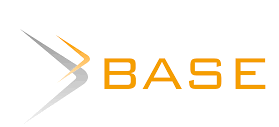Publisher:
Author Guidelines
Article Title in Indonesian
Article Title in English
Author 1*, author 2, author 3, and so on
(authors are required to write their full names in the metadata and article)
Department, University, Address, City, Post Code, Country
*Email: Corresponding Author (Official institution email)
Abstrak (Abstract in Indonesian)
The abstract contains a brief description of the overall content of the article which includes the introduction, theory, methodology and results. The abstract is written in one paragraph, a maximum of 150 words in Times New Roman (TNR) 10 pt.
Kata Kunci : contains 3-5 keywords in Indonesian
Abstract
Abstracts in this article must also be written in English.
Keywords : contains 3-5 keywords in English
Introduction
This section contains the background, objectives, or problem formulation and theories that support or relate to research.
Methods
This section contains the source of the data, how the data was collected, and how the data was analyzed.
Results
This section contains the research results and discussion.
Conclusion
The total number of pages for this article is a maximum of 8 pages, with the right, left, top and bottom margins of 2 cm. Articles are written in 1 space. Tables and figures are presented in the article, not in the appendix. The title of the table is written above the table while the title of the figure is written below it. All equations are numbered in the order in which they appear written at the end of the right margin and created using the equation editor. The complete writing format can be seen in the Template.
Acknowledgments
Acknowledgements are addressed to official institutions or individuals who have funded or contributed to the research.
Conflict of Interest
All authors have no conflict of interest.
References
Since Vol. 9, No. 1 of 2020, the bibliography writing system in the Jurnal Teknik Kimia USU has changed from the previous one. Starting from this volume, the bibliography writing system is written in numerical order in citations. The bibliography is written in full consisting of the author's name, the name of the journal or book, the publisher, the name of the city, the year of publication and the pages of the journal/book. Abbreviations of journal names are written with a common abbreviation or in accordance with the journal's initials. To ensure uniformity and facilitate the writing of the bibliography, the authors of this journal should use Mendelay software by choosing the IEEE model. Examples of writing a bibliography can be seen as follows.
Bibliography from the journal
[1] R. Tambun, K. Furukawa, M. Hirayama, M. Shimadzu, S. Y. Yamanaka, and Y. Ohira, Measurement and estimation of the particle size distribution by the buoyancy weighing-bar method and the rosin-rammler equation, J. Chem. Eng. Japan, vol. 49, no. 2, pp. 229“233, 2016.
Bibliography from the seminar proceedings
[2] R. Tambun, Y. Sibagariang, and J. Manurung, Influence of the weighing bar size to determine optimal time of biodiesel-glycerol separation by using the buoyancy weighing-bar method, in IOP Conference Series: Materials Science and Engineering, 2018, vol. 309, no. 1.
Bibliography from the book
[3] T. Allen, Particle Size Measurement, 4th ed. Hong Kong: Chapman and Hall, 1990.
Bibliography from theses and dissertations
[4] S. M. Pasaribu, Enhancing the performance of farmer-managed irrigation systems in the Brantas River Basin of Indonesia, Dissertation, Asian Institute of Technology, Bangkok, 2005.
Bibliography from Industrial Reports
[5] J. Cleveland, Spring Constant Update, Digital Instruments, Santa Barbara, 1996. (Tuliskan alamat website jika ada).
Bibliography sourced from special data
[6] Anonim, 19-th Annual Book of ASTM Standards Part 17, ASTM, Philadelphia, 1969, p.636.















